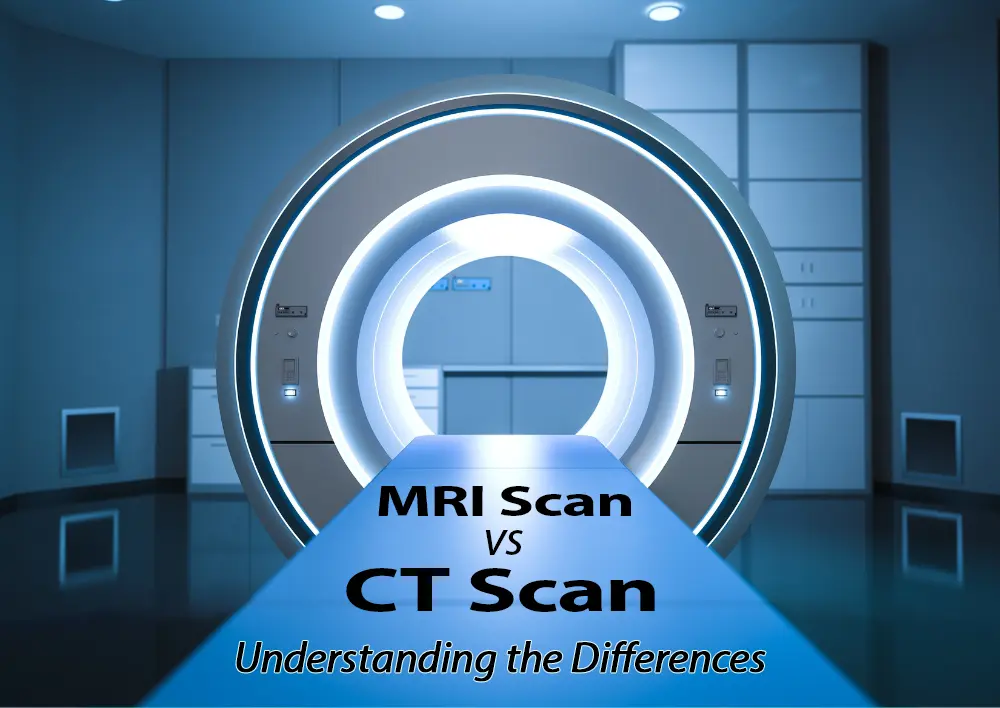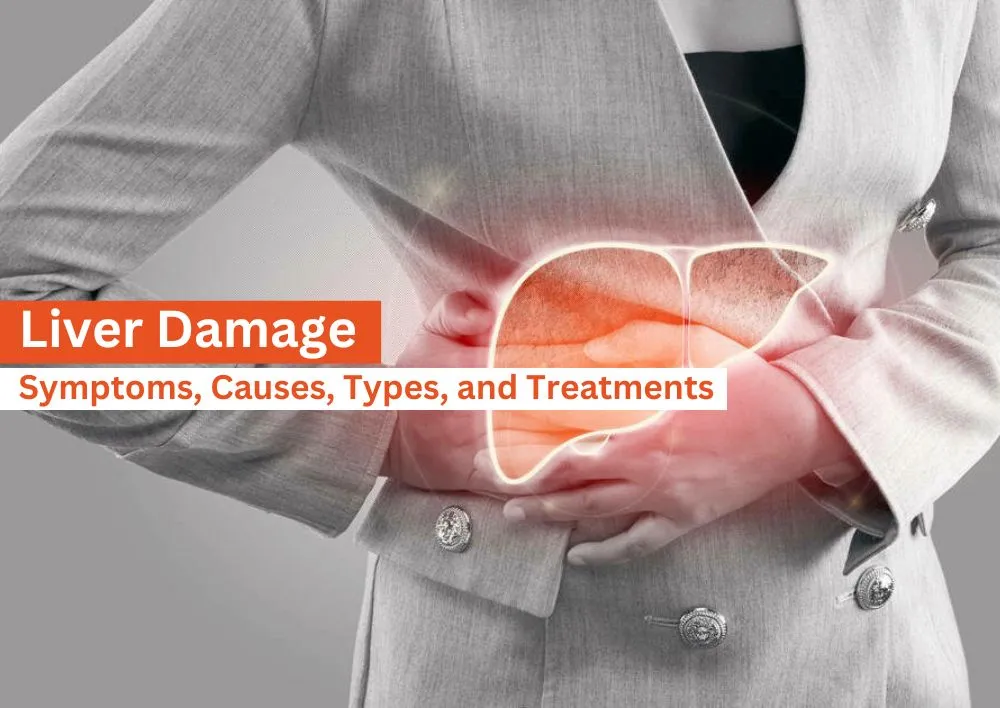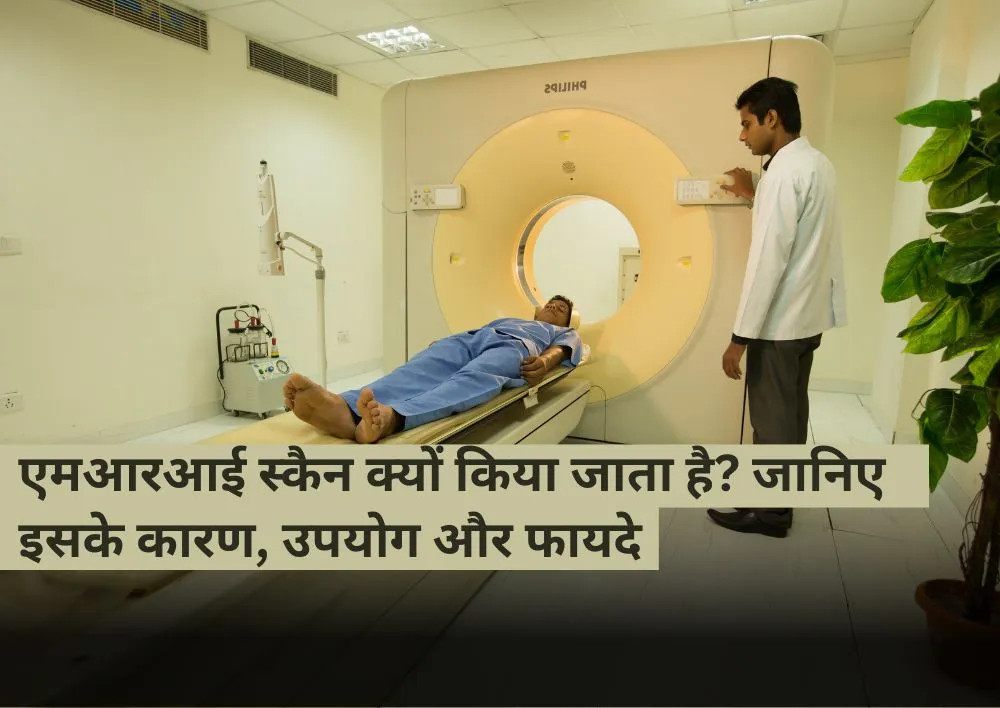MRI Scan vs CT Scan: Understanding the Differences
In the world of medical imaging, two of the most commonly used techniques are Magnetic Resonance Imaging (MRI Scan) and Computed Tomography (CT Scan). According to the best radiologist in Gurgaon at Miracles Mediclinic, Both are important tools in the diagnosis and treatment of various medical conditions, yet they operate on different principles and are suited for different applications. Understanding the difference between MRI scan and CT scan can help patients know why these techniques are recommended. In this blog post, we will discuss MRI scan vs CT scan and how they are different from each other along with which is the best for you.
What is an MRI Scan?
Magnetic Resonance Imaging (MRI) uses powerful magnets and radio waves to create detailed images of the organs and tissues within the body. Unlike X-rays or CT scans, MRI does not use ionizing radiation, making it a safer option for certain patients.
Features of MRI Scan:
-
Technology: MRI scan uses a magnetic field and radio waves.
-
Radiation: No ionizing radiation.
-
Image Detail: Provides high-resolution images, especially useful for soft tissues like the brain, muscles, and connective tissues.
-
Duration: Typically takes longer than a CT scan, ranging from 15 minutes to over an hour.
-
Noise: The procedure can be quite loud due to the operation of the MRI machine.
-
Use Cases: Ideal for neurological, musculoskeletal, cardiovascular, and oncological imaging.
What is a CT Scan?
Computed Tomography (CT or CAT) scans, use X-rays to produce cross-sectional images of the body. By combining several X-ray images taken from different angles, a CT scan creates a complete picture of bones, blood vessels, and soft tissues.
Features of CT Scan:
-
Technology: Uses X-ray technology and computer processing.
-
Radiation: Involves exposure to ionizing radiation.
-
Image Detail: Ideal for visualizing bone fractures, detecting cancers, and assessing lung and chest problems.
-
Duration: Usually quicker than MRI, typically taking just a few minutes.
-
Noise: Relatively quieter than MRI.
-
Use Cases: Often used in emergency settings due to its speed, and for imaging bones, detecting tumors, and guiding certain interventional procedures.
MRI vs CT Scan
Here is an overview of CT Scan vs MRI. This will help you know the difference between MRI scan and CT Scan.
-
Imaging Techniques:
-
MRI Scan: Uses magnetic fields and radio waves.
-
CT Scan: Uses X-rays and computer processing.
-
-
Radiation Exposure:
-
MRI Scan: No exposure to ionizing radiation.
-
CT Scan: Involves ionizing radiation, which can be a concern for frequent use.
-
-
Image Quality:
-
MRI Scan: Ideal for soft tissue distinction; excellent for brain, spinal cord, and muscle imaging.
-
CT Scan: Better for imaging bone structures, detecting acute bleeding, and in trauma settings.
-
-
Duration of Procedure:
-
MRI Scan: Longer duration, usually requiring the patient to remain still for extended periods.
-
CT Scan: Fast, usually completed in a few minutes.
-
-
Cost:
-
MRI Scan: Generally more expensive due to the complexity of the technology and longer procedure times.
-
CT Scan: Generally less expensive and more widely available.
-
-
Comfort and Noise:
-
MRI: Can be uncomfortable due to the confined space and loud noises; may not be suitable for claustrophobic patients.
-
CT Scan: More comfortable and quieter; suitable for patients with claustrophobia.
-
When to Choose MRI Over CT Scan?
MRI is generally preferred when detailed images of soft tissues are required, such as:
-
Brain and spinal cord anomalies
-
Joint and musculoskeletal issues
-
Cardiovascular system assessment
-
Detecting certain cancers and monitoring treatment progress
When to Choose CT Scan Over MRI?
CT scans are favored in scenarios where speed and bone imaging are crucial, such as:
-
Emergencies ( head trauma, stroke)
-
Detailed bone imaging and fractures
-
Detecting and assessing tumors
-
Evaluating lung and chest conditions
Advantages of a CT Scan
Here are some key advantages of Computed Tomography (CT) scans:
-
Fast Imaging: CT scans can be completed in minutes, making them ideal for emergencies such as in cases of trauma or stroke where time is critical.
-
Quick Results: The short turnaround allows for faster diagnosis and treatment planning, which is crucial in acute medical conditions.
-
Bone Fractures: CT scans provide excellent detail of bone structures, making them the preferred choice for diagnosing fractures and other bone-related injuries.
-
Detection of Calcifications: They are effective in identifying calcifications and bone abnormalities that might not be visible on other imaging modalities.s:
-
Multiple Angles: CT scans create cross-sectional images from multiple angles, offering a more complete view of the internal structures compared to traditional X-rays.
-
3-Dimensional Reconstructions: Advanced CT technology can produce 3D images, providing a detailed view that helps in diagnosis and surgical planning.
-
Broad Applications: CT scans are used to diagnose a wide range of conditions, including tumors, infections, blood clots, internal bleeding, and lung and chest diseases.
-
Guidance for Interventions: They are often used to guide biopsies, needle aspirations, and other minimally invasive procedures.
-
Head Trauma: CT scans are the imaging method of choice for assessing head injuries, detecting hemorrhages, and evaluating stroke.
-
Abdominal Emergencies: They are highly effective in diagnosing acute abdominal conditions, such as appendicitis, kidney stones, and bowel obstructions.
-
Non-Invasive: The scan is non-invasive and painless, requiring no recovery time, which means patients can return to their normal activities immediately after the procedure.
-
Cancer Detection: CT scans can identify tumors and assess their size, shape, and location, playing an important role in cancer diagnosis and staging.
-
Vascular Conditions: They are valuable in detecting and evaluating vascular diseases, such as aneurysms and blockages in blood vessels.
-
Pacemakers and Metal Implants: Unlike MRI, CT scans are safe for patients with pacemakers, cochlear implants, and other metal implants, as they do not use strong magnetic fields.
Advantages of MRI
Magnetic Resonance Imaging (MRI) offers several benefits, especially in the detailed view of soft tissues. Here are some key advantages of MRI:
-
High-Resolution Images: MRI provides excellent differences between different types of soft tissues, making it ideal for imaging the brain, muscles, heart, and other internal organs.
-
Detailed Anatomy: It is especially useful for visualizing complex anatomical structures and subtle tissue differences.
-
Safe Imaging: MRI uses magnetic fields and radio waves, not ionizing radiation, which reduces the risk of radiation-induced cancer. This makes it safer for repeated use and imaging sensitive populations such as children and pregnant women.
-
Wide Range of Applications: MRI is effective for a variety of medical conditions, including neurological, musculoskeletal, cardiovascular, and oncological disorders.
-
Functional Imaging: Advanced MRI techniques, such as functional MRI (fMRI), allow for the assessment of brain activity by measuring changes in blood flow, making it useful for neurological research and diagnosis.
-
Neurological Disorders: MRI is the gold standard for imaging the brain and spinal cord, providing detailed images that help in diagnosing conditions like multiple sclerosis, brain tumors, stroke, and spinal cord injuries.
-
White and Gray Matter: It can differentiate between white and gray matter, helping in the diagnosis of neurological diseases.
-
Soft Tissue Structures: MRI is excellent for imaging joints, ligaments, tendons, and cartilage, making it valuable for diagnosing sports injuries and degenerative joint diseases.
-
No Bone Obstruction: Unlike X-rays and CT scans, bones do not cover the view of surrounding soft tissues.
-
Heart and Blood Vessels: MRI provides detailed images of the heart and blood vessels without the need for contrast agents in some cases, helping diagnose conditions like heart disease, congenital heart defects, and vascular diseases.
-
Flow and Function: Cardiac MRI can assess both the structure and function of the heart, including blood flow and myocardial perfusion.
-
Cancer Detection: MRI is effective in detecting and characterizing tumors, especially in the brain, breast, liver, and other soft tissues.
-
Treatment Monitoring: It helps in monitoring the effectiveness of cancer treatments by providing detailed images of tumor response.
-
Painless and Safe: MRI is a non-invasive and generally painless procedure that does not require recovery time, allowing patients to resume normal activities immediately after the scan.
-
No Metal Restrictions: While metal implants can be a concern, advancements in MRI technology have made it possible to safely image patients with certain types of implants and devices.
Disadvantages of a CT Scan
While CT scans are a powerful diagnostic tool, they do have some limitations and potential drawbacks.
-
Ionizing Radiation: CT scans use X-rays, which involve exposure to ionizing radiation. This exposure can increase the risk of cancer over time, especially with repeated scans.
-
Higher Dose Compared to X-rays: The radiation dose from a CT scan is much higher than that from a standard X-ray, raising concerns about cumulative radiation exposure.
-
Soft Tissue Distinction: CT scans are less effective than MRI at distinguishing between different types of soft tissues. They may not provide as much detail when imaging the brain, muscles, or connective tissues.
-
Subtle Differences: Fine distinctions in soft tissue, such as those required for detailed neurological or musculoskeletal assessments, are better imagined with MRI.
-
Contrast Agents: Some CT scans require the use of contrast material to enhance image clarity. These agents can cause allergic reactions in some patients, ranging from mild itching, and rash to severe allergy.
-
Kidney Function: Patients with compromised kidney function may be at risk of nephropathy due to the contrast agents used in some CT scans.
-
Movement Sensitivity: While CT scans are relatively quick, patient movement can still cause artifacts that degrade image quality. This is especially challenging with young children or patients who cannot remain still.
-
Expense: CT scans are generally more expensive than standard X-rays. While they are less costly than MRI scans, the price can still be a barrier for some patients, especially those without insurance coverage.
-
Fetal Risks: The ionizing radiation used in CT scans poses a risk to the developing fetus, making them unsuitable for pregnant women unless necessary.
-
Pacemaker Compatibility: Although CT scans are safer than MRI for patients with certain types of metal implants, they are not entirely risk-free. Careful consideration is needed for patients with pacemakers and other sensitive devices.
-
Less Effective for Functional Imaging: CT scans are primarily structural imaging tools and do not provide functional information about tissues and organs, unlike certain specialized MRI techniques or nuclear medicine scans.
-
Incidental Findings: Detailed images from CT scans can sometimes reveal incidental findings that are clinically insignificant but may lead to further unnecessary testing and anxiety.
-
Overutilization: There is a concern about the overuse of CT scans in clinical practice, sometimes leading to unnecessary radiation exposure and increased healthcare costs.
Disadvantages of an MRI Scan
While MRI (Magnetic Resonance Imaging) is a powerful diagnostic tool, it also has several limitations and potential drawbacks.
-
Expense: MRI scans are generally more expensive than other imaging modalities such as X-rays and CT scans. This higher cost can be a barrier for patients without adequate insurance coverage or financial resources.
-
Duration: MRI scans typically take longer than other imaging procedures. Scans can range from 15 minutes to over an hour, depending on the area being examined and the type of MRI.
-
Patient Comfort: The longer duration can be uncomfortable for patients, especially those who have difficulty remaining still for extended periods or those with conditions causing pain or discomfort.
-
Enclosed Space: The MRI machine's design, usually a narrow tube, can induce claustrophobia in some patients. This enclosed environment may cause anxiety or panic.
-
Noise: MRI machines are loud, producing repetitive knocking and thumping sounds, which can be distressing. While ear protection and music are often provided, the noise can still be bothersome.
-
Access: MRI machines are not as widely available as other imaging devices like CT scanners and X-ray machines. This limited availability can lead to longer wait times for appointments.
-
Magnetic Fields: Patients with certain types of metal implants, such as pacemakers, cochlear implants, or some types of aneurysm clips, may not be suitable for MRI due to the strong magnetic fields. These fields can interfere with or be affected by metallic objects.
-
Safety Concerns: Even with modern MRI-compatible devices, there are still safety concerns that must be carefully evaluated on a case-by-case basis.
-
Artifact Risk: MRI is sensitive to patient movement, which can create artifacts and degrade image quality. This is especially challenging when imaging children or patients with movement disorders.
-
Pregnancy: While MRI does not use ionizing radiation, the safety of MRI during pregnancy, particularly in the first trimester, is still a subject of ongoing research. MRI is generally avoided unless necessary.
-
Gadolinium-Based Contrast Agents: Although generally safe, the use of gadolinium-based contrast agents in MRI can pose risks for patients with kidney problems. In rare cases, these agents can cause nephrogenic systemic fibrosis (NSF).
-
Bone Imaging: MRI is not as effective as CT for imaging bone structures and detecting acute fractures. CT scans provide superior detail for bony anatomy.
-
Emergency Situations: Due to the longer scan times, MRI is not typically used in emergency settings where rapid diagnosis is important.
-
Interpretation: MRI images require a high level of expertise to interpret accurately. This complexity can lead to variability in diagnostic accuracy depending on the radiologist's experience and skill.
-
Incidental Findings: The high level of detail in MRI images can lead to the detection of incidental findings, which may not be clinically significant but can cause unnecessary anxiety and lead to additional testing and procedures.
Which One is Right for You?
The choice between an MRI and a CT scan depends on several factors, including the type of condition being diagnosed, the urgency of the situation, and patient-specific considerations like pregnancy or claustrophobia.
-
MRI is ideal for detailed images of soft tissues, making it the preferred choice for neurological and musculoskeletal conditions.
-
CT Scan is better suited for emergencies, quick evaluations, and detailed images of bones and chest organs.
Conclusion:
Both MRI scans and CT scans are valuable diagnostic tools, each with its unique advantages and limitations. The choice between the two depends largely on the specific medical condition being investigated, the area of the body being examined, and the patient's medical history. If you’re experiencing health issues and need an imaging scan, consult with your radiologist doctor near you to determine the best option for your needs. Understanding the strengths and limitations of both MRI scan and CT scan can help you make an informed decision about your health.
If you are looking for a radiology center for an MRI scan or CT scan near you? Contact Miracles Healthcare and online schedule your test today.



_in_Pregnancy.webp)









Was the information useful?
0 0